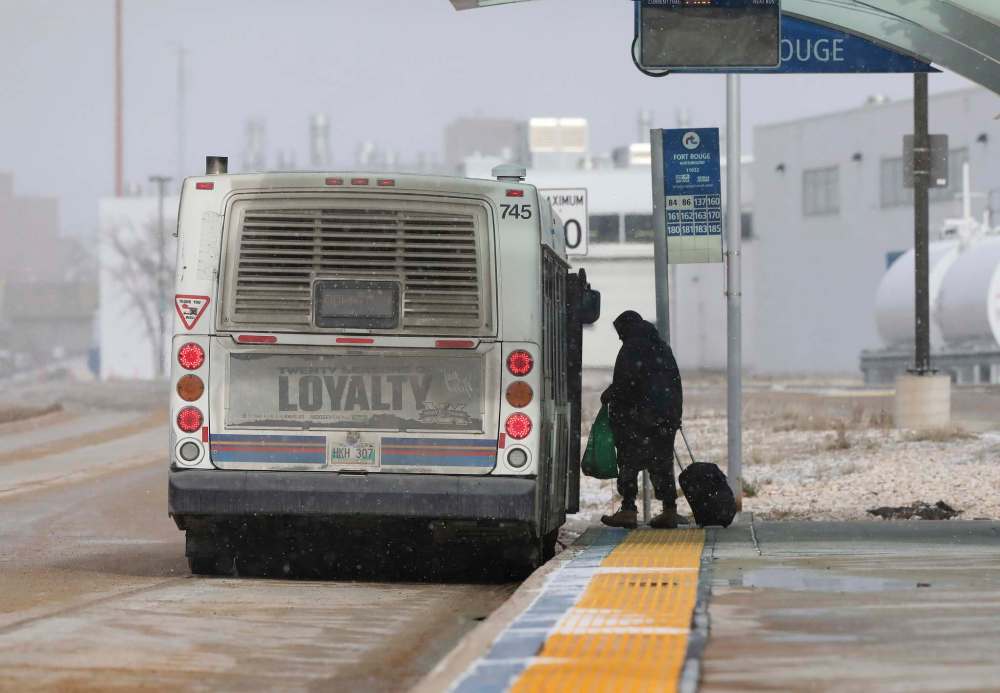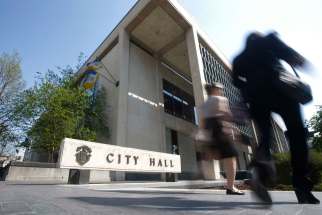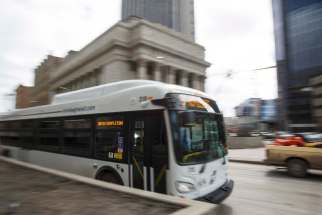Lots to fix before Transit expands outward
Read this article for free:
or
Already have an account? Log in here »
To continue reading, please subscribe:
Monthly Digital Subscription
$0 for the first 4 weeks*
- Enjoy unlimited reading on winnipegfreepress.com
- Read the E-Edition, our digital replica newspaper
- Access News Break, our award-winning app
- Play interactive puzzles
*No charge for 4 weeks then price increases to the regular rate of $19.00 plus GST every four weeks. Offer available to new and qualified returning subscribers only. Cancel any time.
Monthly Digital Subscription
$4.75/week*
- Enjoy unlimited reading on winnipegfreepress.com
- Read the E-Edition, our digital replica newspaper
- Access News Break, our award-winning app
- Play interactive puzzles
*Billed as $19 plus GST every four weeks. Cancel any time.
To continue reading, please subscribe:
Add Free Press access to your Brandon Sun subscription for only an additional
$1 for the first 4 weeks*
*Your next subscription payment will increase by $1.00 and you will be charged $16.99 plus GST for four weeks. After four weeks, your payment will increase to $23.99 plus GST every four weeks.
Read unlimited articles for free today:
or
Already have an account? Log in here »
Hey there, time traveller!
This article was published 11/02/2020 (2128 days ago), so information in it may no longer be current.
In a different city, perhaps one with a fully functional transit system, this would be received as a perfectly reasonable and logical suggestion.
Fix city transit funding before looking beyond borders: advocates

Posted:
A public transit advocacy group is driving home the need for increased funding for Winnipeg Transit and improved frequency on board city buses — before extending service to bedroom communities.
But we live in Winnipeg, a mid-sized metropolis in the perpetual grip of debate and dissatisfaction over its overburdened and underfunded public-transit service, so the suggestion this week that it should consider extending that service to residents of outlying communities was met with immediate skepticism and perhaps even a measure of scorn.
The idea of exploring opportunities to create public-transport connections between Winnipeg and its surrounding communities is part of the city’s effort to develop a new transportation master plan by 2021. Civic officials connected with the project have issued a number of requests for consulting services to explore such issues as the potential impact of driverless vehicles, the movement of goods and transport carriers through Winnipeg and the reintroduction of public-transit connections to so-called “bedroom communities,” including Headingley and St. Andrews and extending to Selkirk, Stonewall and Rosser.
Under its current mandate, Winnipeg Transit does not have the authority to operate outside city limits unless it is contracted to do so by another municipality, so the plan being pondered would require a redefinition of Transit’s role and/or new agreements with adjacent communities.
The rationale, according to transportation master plan project manager Alex Regiec, is that extending transit service outward and creating park-and-ride options on major regional corridors along the city’s outskirts could reduce the number of vehicles on the road, thereby alleviating the wear and tear on Winnipeg’s streets and encouraging ridership on the city’s transit system.

Not so fast, countered a spokesman for the advocacy group Functional Transit Winnipeg — before the city entertains any lofty ambitions of expanding the footprint and client base of Winnipeg Transit, its focus should be squarely on providing adequate, reliable service to the residents who currently count on — and are consistently disappointed by — its service.
“Our big concern is with the transportation system as it is,” said the group’s president, Derek Koop. “We see the pass-ups (full buses that can’t stop to collect additional passengers waiting at stops) have been increasing over the past five years, so clearly the levels of funding, as is, are not working. We really hope to see improvements on that aspect if we’re looking at adding more people to our system.”
Mr. Koop’s point is well taken. While it’s admirable, for a host of reasons ranging from carbon-footprint reduction to infrastructure preservation, for city officials to consider the possibility of expanding Transit’s reach and decreasing vehicular traffic into Winnipeg from surrounding areas, suggesting an extension to bedroom communities when the city proper is so poorly served by its existing bus service is a clear-cut case of putting laudable aspiration ahead of the need for practical implementation.
Suggesting an extension to bedroom communities when the city proper is so poorly served by its existing bus service is a clear-cut case of putting laudable aspiration ahead of the need for practical implementation.
The city needs first to address the lingering frustrations of existing Transit users, as the service juggles the seemingly contradictory goals of completing and expanding its planned rapid-transit corridors and bolstering the conventional bus service that draws continuous complaints because of unreliable schedules and the aforementioned increasingly common pass-ups.
Extending transit to address Winnipeg’s continuing suburban sprawl is a commendable goal, but there’s much that needs to be done better inside the city before anyone considers putting a bus stop in the ground outside the Perimeter.










